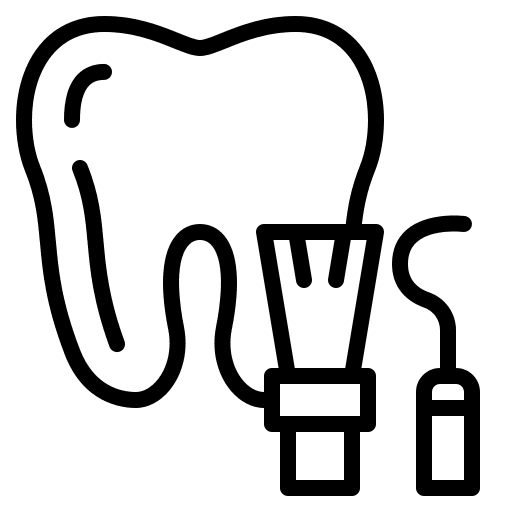WHAT IS
Malformed
Malformed Teeth, also known as dental anomalies or dental malformations, refer to abnormalities or irregularities in the shape, size, structure, or position of teeth. These anomalies can occur during tooth development and can affect both primary (baby) and permanent teeth. Malformed teeth can vary widely in their appearance and characteristics.
Here are some common types of dental malformations:
Tooth Hypoplasia: This condition occurs when there is incomplete or insufficient enamel formation, resulting in a tooth with a smaller or underdeveloped size. It can be caused by factors such as malnutrition, illness, trauma, or genetic conditions.
Microdontia: Microdontia refers to teeth that are smaller in size than the average tooth. It can affect a single tooth or multiple teeth and is often a result of genetic factors.
Macrodontia: Macrodontia is the opposite of microdontia. It involves the enlargement of one or more teeth beyond the normal size. Genetic factors can also contribute to this condition.
Supernumerary Teeth: This refers to the presence of extra teeth beyond the normal dentition. Supernumerary teeth can be smaller or larger than the surrounding teeth and may cause crowding or misalignment of the dental arch.
Peg-shaped Teeth: Peg-shaped teeth have a conical or tapered appearance, with a narrow and pointed shape resembling a peg. This condition can affect one or more teeth and is often associated with genetic factors or environmental factors during tooth development.
Teeth with Anomalies in Shape or Structure: Some teeth may have irregularities in shape, such as teeth with deep grooves or extra cusps. These anomalies can be caused by genetic factors, developmental issues, or external factors during tooth formation.
Ectopic Eruption: Ectopic eruption occurs when a tooth emerges in an abnormal position, such as outside the dental arch or in an inclined or rotated position. This can lead to problems with tooth alignment and occlusion.
Benefits of Treating
Malformed
- Dental Bonding: Dental bonding involves applying a tooth-colored resin material to the affected tooth. It can be used to reshape or rebuild malformed teeth, improving their appearance and function.
- Dental Veneers: Veneers are thin shells made of porcelain or composite resin that are custom-made to fit over the front surface of the teeth. They can be used to cover up malformed teeth, providing a more natural and aesthetically pleasing appearance.
- Dental Crowns: Dental crowns are tooth-shaped caps that are placed over malformed teeth to restore their shape, size, strength, and appearance. Crowns are often recommended for more severe cases of malformation.
- Orthodontic Treatment: Orthodontic treatment, such as braces or clear aligners, may be necessary to correct the alignment of malformed teeth. Orthodontics can help move the teeth into their proper positions, improving both function and aesthetics.
- Tooth Extraction and Replacement: In some cases, severely malformed teeth may need to be extracted if they are causing significant problems. After extraction, options like dental implants, bridges, or dentures can be considered to replace the missing teeth.
WHY CHOOSE
Cleveland Dental Care
Experienced and Skilled Dentists: Cleveland Dental Care likely employs experienced and skilled dentists who specialize in various aspects of dental care, including the treatment of malformed teeth. These dentists are likely to have received extensive training and possess the expertise needed to address complex dental issues.
Comprehensive Treatment Options: Dental care facilities like Cleveland Dental Care typically offer a wide range of treatment options to address various dental problems, including malformed teeth. They may provide cosmetic dentistry services, such as dental bonding, veneers, or crowns, which can help improve the appearance and function of malformed teeth.
Customized Treatment Plans: Dentists at Cleveland Dental Care are likely to create personalized treatment plans tailored to each patient’s specific needs. They will likely conduct a thorough examination of the patient’s teeth and develop a treatment approach that aims to correct the malformation while considering the patient’s preferences and goals.
Advanced Technology and Techniques: Established dental care providers often invest in advanced technology and stay up to date with the latest dental techniques. Cleveland Dental Care might utilize cutting-edge equipment, such as digital imaging systems or CAD/CAM technology, to enhance the accuracy and precision of treatment procedures for malformed teeth.
Patient-Focused Care: Reputable dental care providers prioritize patient satisfaction and comfort. Cleveland Dental Care may offer a welcoming and supportive environment for patients, ensuring that their concerns are addressed and their treatment experience is as pleasant as possible.
Positive Reviews and Reputation: It would be advisable to research and review patient testimonials or online reviews to gauge the reputation of Cleveland Dental Care. Positive feedback from previous patients can provide insights into the quality of care and the success of treatment outcomes for malformed teeth.
FAQ's About
Treating Malformed Teeth
Malformed teeth refer to teeth that have developed abnormally, resulting in irregular shape, size, or structure. These abnormalities can occur during tooth development, and they may affect the appearance, function, and overall dental health of an individual.
Malformed teeth can have various causes, including genetic factors, environmental influences, trauma to the teeth or jaw during development, certain diseases or conditions (such as amelogenesis imperfecta or dentinogenesis imperfecta), nutritional deficiencies, and exposure to certain medications or substances during tooth development.
Malformed teeth are typically diagnosed during a dental examination. A dentist will visually inspect the teeth and may also use dental X-rays or other imaging techniques to get a more detailed view of the teeth and their structures. Additionally, the dentist may inquire about the patient’s medical history and perform a thorough evaluation to determine the underlying cause of the malformation.
While some causes of malformed teeth are beyond control, there are certain preventive measures that can be taken. Maintaining good oral hygiene, ensuring a nutritious diet with adequate vitamins and minerals during tooth development, avoiding trauma to the teeth, and regular dental check-ups can help minimize the risk of developing malformed teeth.
Untreated malformed teeth can lead to various complications. These may include difficulties with biting and chewing, speech problems, increased risk of tooth decay and gum disease due to difficulties in cleaning the teeth properly, aesthetic concerns, and potential impact on overall oral health. It is generally recommended to address malformed teeth to prevent potential complications and maintain optimal dental health.










